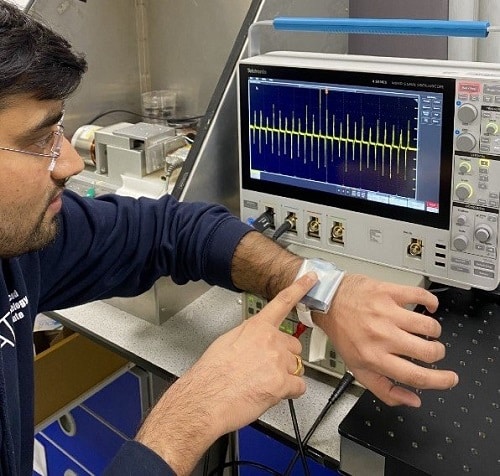Wearable devices could soon be entirely made of recycled waste materials and powered by energy harvested via human movement

Plastics are perhaps the number one enemy of a clean, environmental-friendly earth. Thanks to the efforts by several institutions, public bodies and organisations, the growth of unsupervised plastic segregation have become slow. But more action needs to be taken. One of the efforts comes from the University of Surrey scientists who have created a wrist device made from discarded paper wipes and plastic cups. The prototype device runs on energy harvested by the wearer’s movements and can transmit Morse code.
“It won’t be long until we have to ask ourselves which of the items we own are not connected to the internet. However, the current internet-of-things (IoT) revolution highlights the simple fact that our planet doesn’t have the raw resources to continue to make these devices which are in such high demand,” said Dr Bhaskar Dudem, project lead and Research Fellow at the University of Surrey’s Advanced Technology Institute (ATI).
The developers believe the energy-harvesting wearable device could be a future game-changer for the consumer, medical and security sectors.
Based on Triboelectric Nanogenerators (TENGs), the self-powered device includes materials that become electrically charged upon coming into contact with one another. With the help of static charge, energy gets harvested from movement through a process called electrostatic induction.
“Our research demonstrates that there is a path to creating sustainable technology that runs on electricity powered by us, the users of that technology,” said Dr Bhaskar Dudem.
Dr Bhaskar Dudem along with his team now focuses on bringing this technology to smartwatches.









